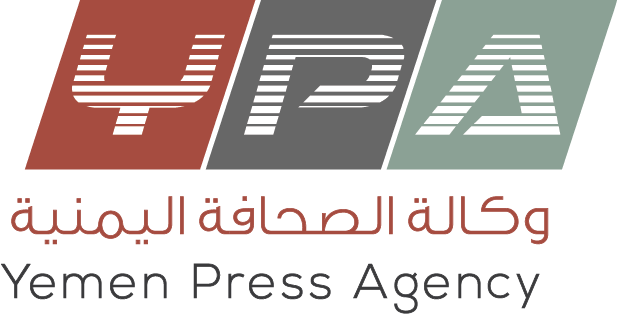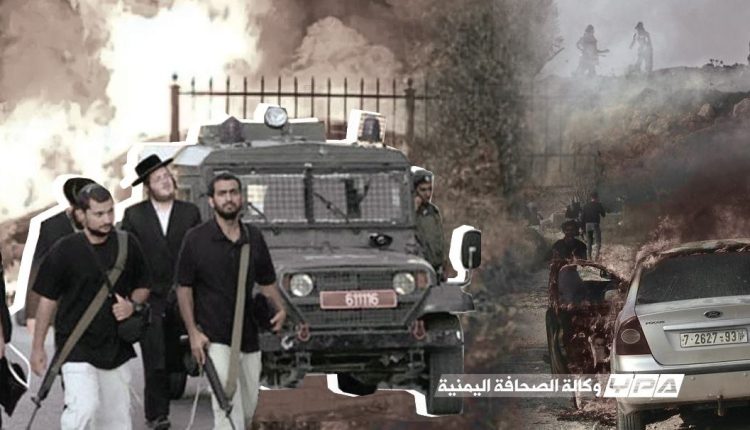SANAA, Oct. 23 (YPA) – The Israeli incursions into the city of Jenin and its refugee camp are no longer mere “security responses” to operations by Palestinian resistance factions, as the Israeli occupation army claims.
The sheer scale of the targeting, the systematic nature of the operations, and the type of weaponry used all point to a strategic, field-level plan aimed at redrawing the security and political map of the northern West Bank as part of a broader project known within Israeli occupation circles as the “Security Buffer Zone.”
While the Israeli occupation promotes the narrative that its operations “aim to dismantle the resistance’s infrastructure,” on-the-ground facts reveal that Jenin has become a testing ground for a multi-layered concept of control: field security dominance, population management, and the re-engineering of the social environment, paving the way for its effective isolation from the rest of the West Bank governorates.
The Occupation as Demographic Engineer
Since the beginning of 2024, a fundamental change has been observed in the behavior of the Israeli occupation army in the northern West Bank. Instead of short incursions, it has moved to prolonged entrenchment inside cities, accompanied by repeated demolition of civilian infrastructure, particularly roads, electricity and water networks, and educational institutions.
Maps from the Israeli Occupation Planning Authority—as published by the Hebrew newspaper Haaretz last July—show that the area extending from the Jalameh Crossing east of Jenin to the west of the “Kafr Dan” settlement has been included in the scope of “Security Reorganization,” a new administrative description that practically means turning the strip surrounding Jenin into a permanent surveillance zone.
Palestinian map expert Abdel Razeq Yassin confirms that this policy is a reproduction of the “Security Belt” experience in southern Lebanon, but in a soft manner that relies on gradual displacement through siege and destruction, rather than direct evacuation.
Yassin states, “The occupation doesn’t just want to destroy Jenin; it wants to redefine it geographically… it wants it to have no extension, no open borders, and no ability to connect with Nablus and Tulkarm.”
Technology Before the Bullet
One of the striking features of the current Israeli aggression is the excessive reliance on precise military technology: small reconnaissance drones, thermal surveillance devices, listening systems mounted on mobile towers, and tracking chips placed inside ready-made clothing.
According to field sources inside the camp, since last April, the occupation has established an electronic sensor network around the city, designed to monitor any suspicious movements or encrypted communications.
Leaks published on the Hebrew website Ynet revealed that Unit 8200, responsible for electronic intelligence, is using Jenin as a testing field to implement an AI-based tracking system that allows for the analysis of movement patterns within neighborhoods and the precise localization of resistance fighters.
This means the confrontation in Jenin is no longer just a clash between a resistance fighter and an occupier but has transformed into a struggle between Palestinian resistance factions and “Israeli” artificial intelligence in an unequal field race.
The Economy of Slow Siege
The occupation’s tools are not limited to bullets and drones. The economic blockade is an organic part of the subjugation plan.
According to data from the Jenin Governorate Chamber of Commerce, internal trade movement has dropped by 63% since last January, and over 120 small establishments have closed due to the incursions and road closures.
Furthermore, the Jalameh commercial crossing was shut down for over 40 days in the last quarter alone, leading to estimated losses of tens of millions of shekels.
One merchant says, “They are slowly suffocating us; they don’t want us to die all at once, but to get used to a life without prospects.”
This policy is reminiscent of the “Grey Economy” policy used by the occupation in the Gaza Strip during the first years of the blockade since the beginning of September 2005, where supplies were tied to security and political variables, creating a state of habituation to scarcity, such that daily survival itself became a success for the occupation. This siege was intensified in January 2006 after Hamas won the Palestinian elections.
Security Coordination as a Parallel Arm
While the occupation forces continue their daily operations, the Palestinian Authority’s security services simultaneously carry out arrests of former resistance fighters and members of the Jenin Brigade.
According to local sources, there is unannounced coordination aimed at drying up the resistance’s support base through a two-pronged pursuit: the Israeli occupation army from outside and Mahmoud Abbas’s authority apparatuses from inside.
This security dualism has created a state of internal division, where resistance fighters are moving in a closed loop between pursuit and hiding, while residents feel trapped between two occupations, internal and external.
According to local data from Jenin’s Information Committee, the number of martyrs in Jenin Governorate since the start of the aggression on January 21, 2025, has reached about 65 martyrs, including 4 who died by the bullets of the Palestinian Authority security services in separate clashes. The PA also detains over 46 young men from the Jenin camp.
Security expert Faiz Al-Salah believes this model reflects Jenin’s transformation into a political laboratory for testing the formula of “Joint Security” that “Israel” intends to generalize in the northern West Bank, whereby major cities are managed security-wise through an unequal partnership with “Abu Mazen’s” forces, while effective control remains in the hands of the occupation.
The Final Goal: Separating the North from the Heart
Structural analysis of the Israeli occupation operations in Jenin Governorate reveals that the goal does not stop at eliminating resistance factions but extends to creating a geographical rupture between the northern and central West Bank, specifically between Jenin and Nablus.
This explains the intensification of military checkpoints and the expansion of settlements between Silat al-Dhahr and al-Rihaniya, points that could turn into a permanent line of contact preventing human and commercial connection between the two regions.
A research paper issued by the “Jerusalem Center for Public Affairs” last August indicates that the Israeli occupation plan aims to establish a security zone 15 kilometers wide in the northern West Bank, extending from the Salem Crossing in the west to the Jalameh Crossing in the east, where construction and movement are prohibited without special permits.
In other words, what is happening in Jenin today is the first executive step for the major security isolation project, which will turn the northern West Bank into a semi-enclosed entity, isolated from Nablus and Ramallah.
Resistance of Memory and Identity
Despite this systematic preparation, Jenin remains resistant to the Israeli occupation’s engineering.
The camp, more than half of which the occupation has destroyed in one year, continues to rebuild itself as if it were a memory that regenerates every morning.
In every incursion, children emerge to document the scene with mobile phones, as if telling the world, “We are the generation of witnesses… you will not erase us from the picture.”
The occupation may temporarily succeed in tearing up the map, but it is incapable of erasing the collective consciousness that has made Jenin a symbol of Palestinian resistance and every house in it a story of steadfastness.
Beyond the Laboratory
In the balance of power, the Israeli occupation appears superior in everything: weapons, technology, and international support.
But in the balance of will, Jenin stands alone as a reverse laboratory that exposes the fragility of “Israeli” power.
Every attempt to control it turns into a political and moral dilemma, and every raid ends with more popular sympathy for the resistance.
Thus, while the Israeli occupation plans to build a “buffer zone,” Jenin transforms itself into a flaming zone that cannot be controlled by fire or tamed by fear.
As long as the city refuses to be silenced, the Israeli occupation project will remain incomplete, unable to fix the equation of “security for silence,” because the voice of Jenin is louder than any airplane and more accurate than any surveillance camera.
YPA®


